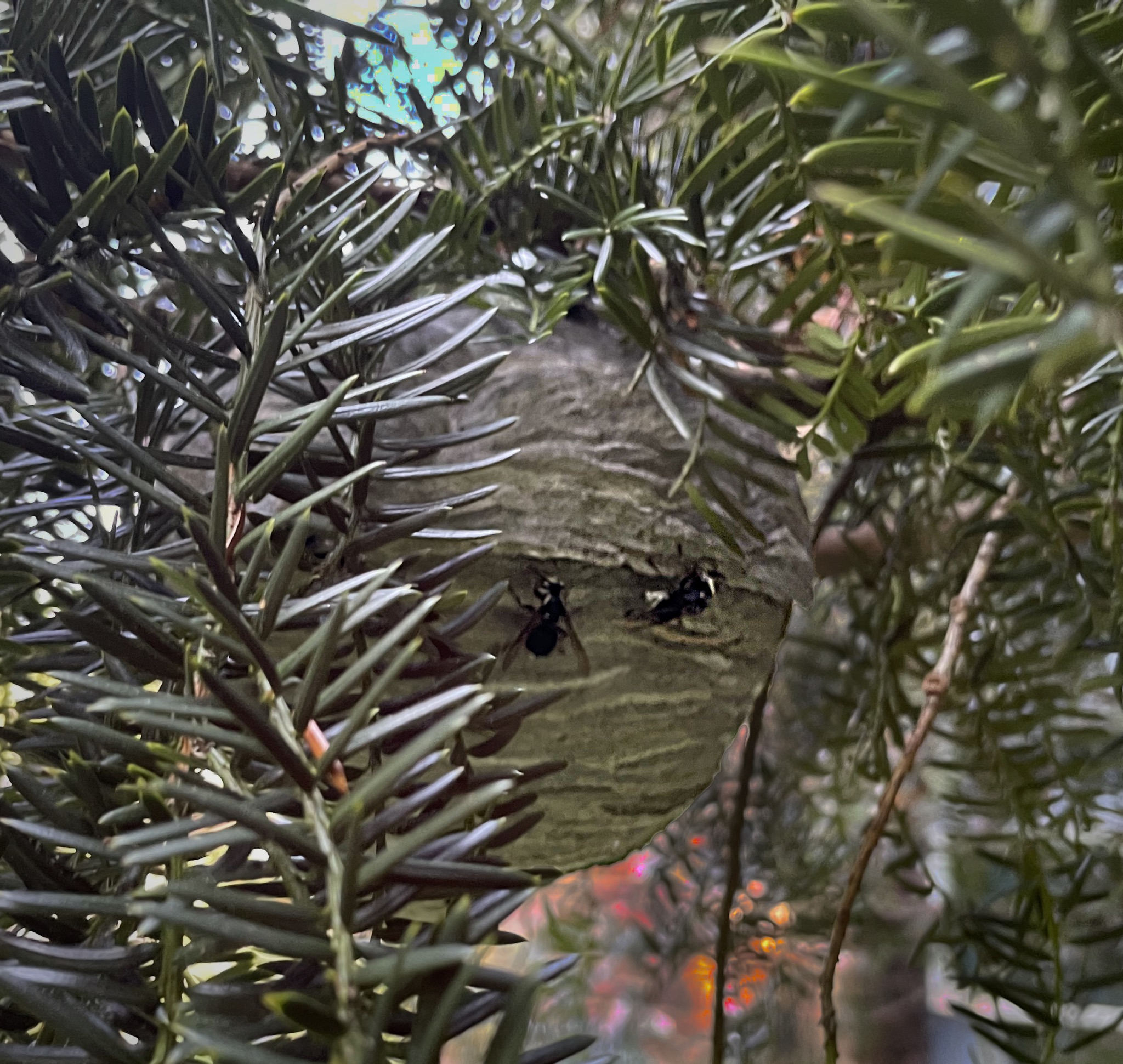There is always time to learn a new skill and I thought the internet could benefit from my experience in this area.

Step 1 - Identify the tree to cut down
In this case - a small fir sapling about 2.5 metres high that was growing too close to my air conditioning unit.
Step 2 - Gather tools
Larger trees will require an ax or chainsaw but this specimen's trunk was only a few inches thick, an easy task for a hand saw. Loppers are also useful for removing smaller braches.
Step 3 - Plan and clear the fall zone
Even small trees are surprisingly heavy (they are made of wood after all). Decide on where you want the tree to fall and make sure there is nothing breakable in that area. Do not be distracted by flying insects.
Step 4 - Start cutting
Make your first cut in the side of the trunk that faces the fall zone. Cut until you are just over halfway through. Then cut from the opposite side of the trunk so the two cuts will meet. Apply pressure while you make this second cut, use your shoulder if you need to keep a hand free to swat at anything nearby.
Step 5 - Timber!
If things have gone well, the two cuts will meet and the tree will fall perfectly into the preselected location.
Take a moment to admire the newly cleared spot and reflect on mankind's mastery of nature. Try not to wince at the sudden sharp pain just above your right ear. Recall that you forgot Step 0.
Step 0 - Check the area for wasp nests

Step 6 - Run, run away
It is probably best if you do not drop your tools on the ground on the way but whatever. Run a little further.
Use ice to reduce the swelling. It won't help but you will feel like you are taking action.
In fairness, these paper waspsResearch has indicated that these were probably bald-faced hornets rather than paper wasps, although the two names are often used interchangeably despite referring to two different species. Bald-faced hornets are (luckily for me) not closely related to real hornets. were actually pretty chill. I was right beside their (quite well hidden) nest for several minutes, and I think I might have actually brushed the nest on my way past just before I got stung.
On the other hand I feel that the wasps are partially to blame. Unlike the German wasps I am used to these wasps are nearly silent and not particularly brightly colored.